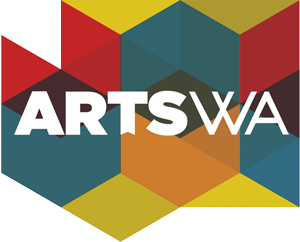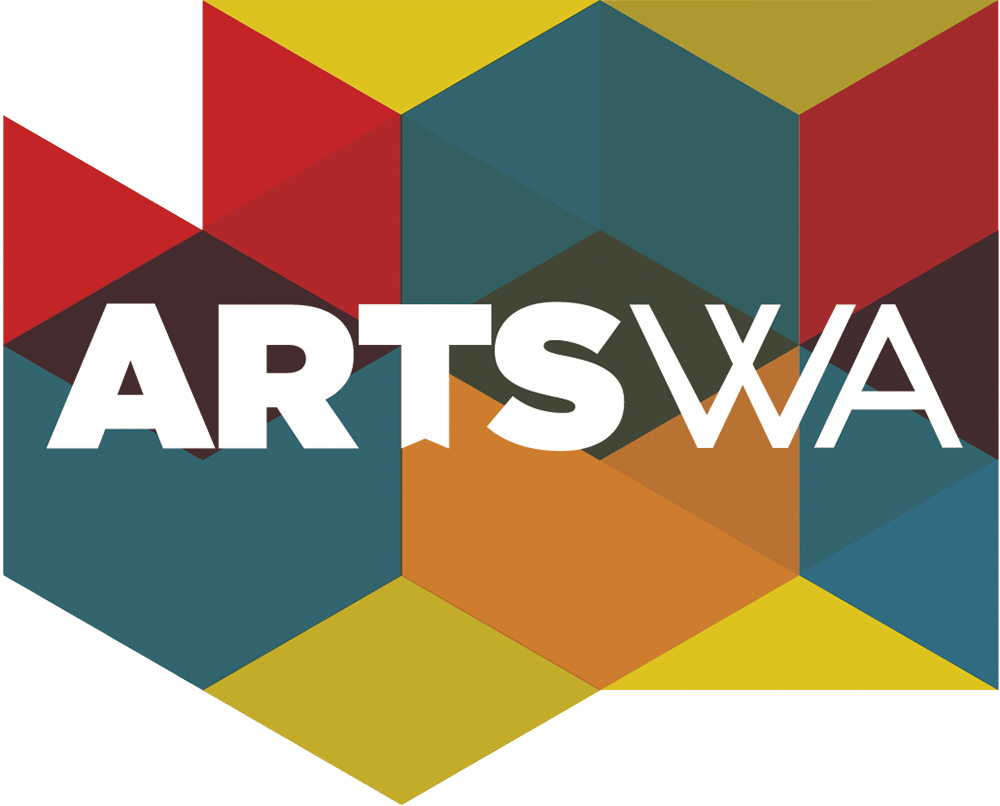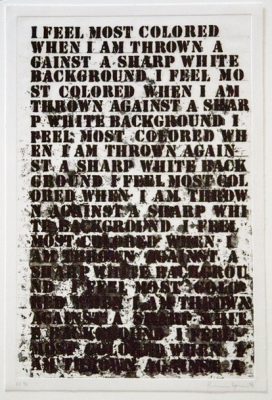ABOUT THE ARTWORK
Artist Glenn Ligon explores race and identity in this print that incorporates a quote from African-American writer Zora Neale Hurston's 1928 essay "How It Feels to Be Colored Me." The repeated text reads: "I feel most colored when I am thrown against a sharp white background.”
This artwork is part of a collection of artworks located in the University of Washington's Kane Hall. The collection pays tribute to the diversity of UW's campus community and features nine artists whose art explores identity. Student leaders from the UW Minority Think Tank were involved in the selection of the artworks in 2005.
This artwork was acquired for the State Art Collection in partnership with University of Washington.
ABOUT THE ARTIST
Conceptual artist Glenn Ligon explores race, language, and identity. His art often includes excerpts from literature, history, and his own life, to comment on American cultural and social identities and the African American experience.
Glenn Ligon lives and works in New York City. He received a Bachelor of Arts from Wesleyan University, Connecticut, in 1982. His work is in the collections of the Museum of Modern Art (MOMA) in New York City, the Art Institute of Chicago, the Los Angeles County Museum of Art (LACMA), and many more in the United States and around the world.
ARTWORK DETAILS
| Material Category | Work on paper - print |
| Medium | Lithograph print on paper |
| Dimensions | 25 in x 17 1/4 in |
| ID Number | WSAC2005.029.002 |
| Acquisition Method | Curated Selection |
| Artist Location | New York, United States |
Location Information
| Agency | University of Washington |
| Artwork Location | University of Washington Kane Hall, Lobby, 1st floor, 4069 Spokane Lane |
| WA County | King |
| Placement | Interior |
| Site Type | University |
| Address | 15th Ave. NE, between NE Pacific St. and NE 45th St. Seattle, WA 98195 |
| Geo. Coordinates | 47.656395, -122.309267 |
| Before Visiting | Some artworks may be located in areas not accessible to the general public (especially in K-12 public schools). Consider contacting the site prior to a visit to ensure access. |
| Map |
Lesson Plans and Documents
Related












_Edited.jpg)
_edited.jpg)